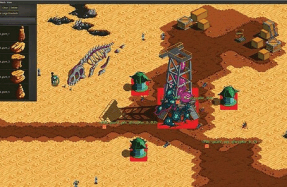THE HISTORY OF WONDER BOY



There’s no question that the Eighties were the decade that videogame heroes were truly born. The games of the Seventies had scarcely had identifiable characters at all, and the most iconic ones were easily the villainous Space Invaders. The Eighties gave us Pac-Man, Q*bert, Frogger and Donkey Kong – no contest. But those early greats didn’t do away with legions of cars and spaceships overnight, and even by the middle of the decade, you were as likely to see anonymous sportsmen or vehicles in starring roles as any character you could identify. It was with that environment in mind that Escape – later known as Westone – began to develop a game about a little boy wearing some leaves to cover his modesty.
“I think it was the summer of 1985 when we started developing Wonder Boy. It was the time when Gradius was a big hit at the arcade. At that time, shooting games were the star of arcade games, and I chose the side-scrolling action genre for our first game as an independent developer,” says Ryuichi Nishizawa, cofounder of Westone and creator of the Wonder Boy series. “Back then, there were not many games with strong characters, and I thought that a game with large characters jumping around the screen would stand out in the arcade. As expected, Wonder Boy stood out quite a bit.” You played as Tom-Tom, as he was named in English releases, as he attempted to rescue his kidnapped girlfriend Tina. In gameplay terms, this meant venturing through platform obstacle courses and collecting fruit to keep your health up, while avoiding hazards like snakes, snails and fires, as well as battling bosses.
One of the more memorable features of the game was the power-ups you’d get from breaking eggs, including stone axes and a skateboard. “The initial game concept for was designed to have the main character keep running and not be able to stop. This was because I wanted the player to enjoy the jumping action in a continuous state of tension,” says Nishizawa, explaining the inspiration for the latter. “However, when I implemented this specification, I found that the game was more difficult than I had imagined and was not for everyone. So I changed the specifications to allow players to run and stop at their own choice. This made it an action game for
You’re reading a preview, subscribe to read more.
Start your free 30 days



